Nastavljamo s predstavljanjem dojmova i osvrta s praksi programa „Architecture without borders“ koje Društvo arhitekata Zagreba uspješno privodi kraju u suradnji sa Leonardo Da Vinci potprogramom cijeloživotnog obrazovanja Europske unije. Danas: Lana Trobentar i Lisabon.
U Lisabonu sam provela tri mjeseca, što nije predugo, ali dovoljno za doživjeti grad, naučiti koju riječ, upoznati ljude, kulturu, te skoro svaki kutak grada, trgove, parkove... Bila sam smještena u stanu s još sedam internacionalnih cimera, u grijanoj sobi (da, to je važno napomenuti, jer zbog skupe struje i neuređenog sustava grijanja, ljudi se zimi smrzavaju). Živeći u relativnom centru grada, svakodnevne rute sam savladavala "na noge", te je polako Lisabon postao moj novi dom.
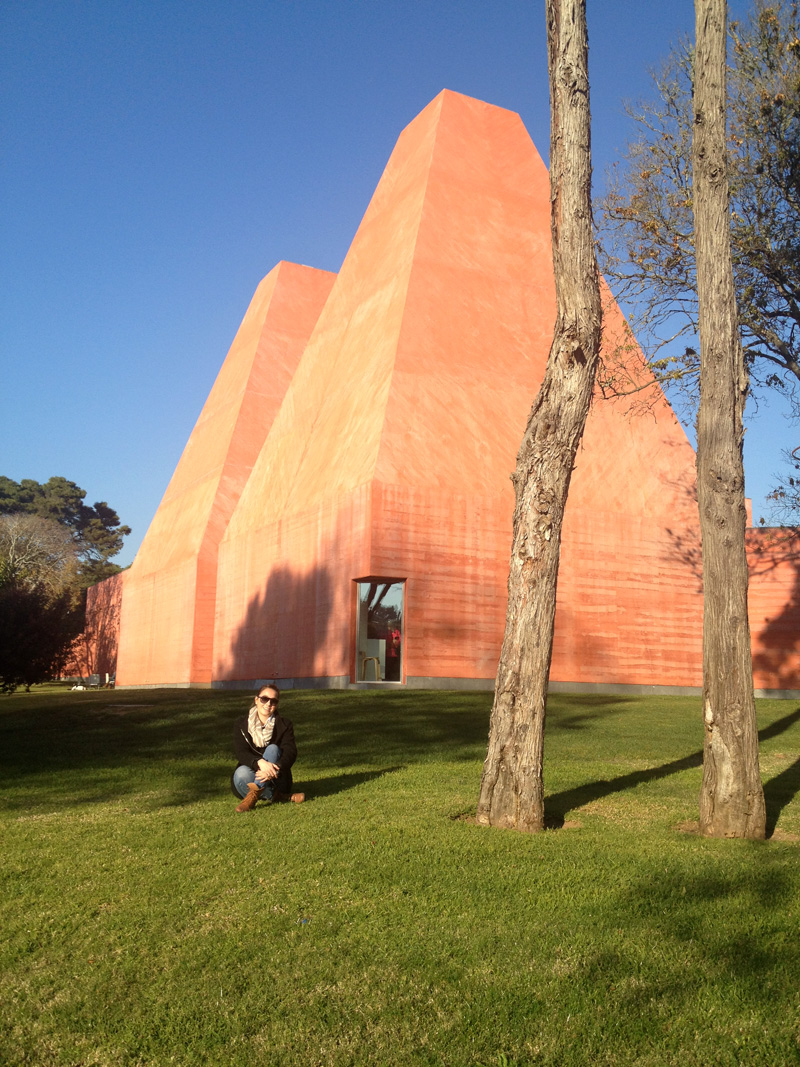
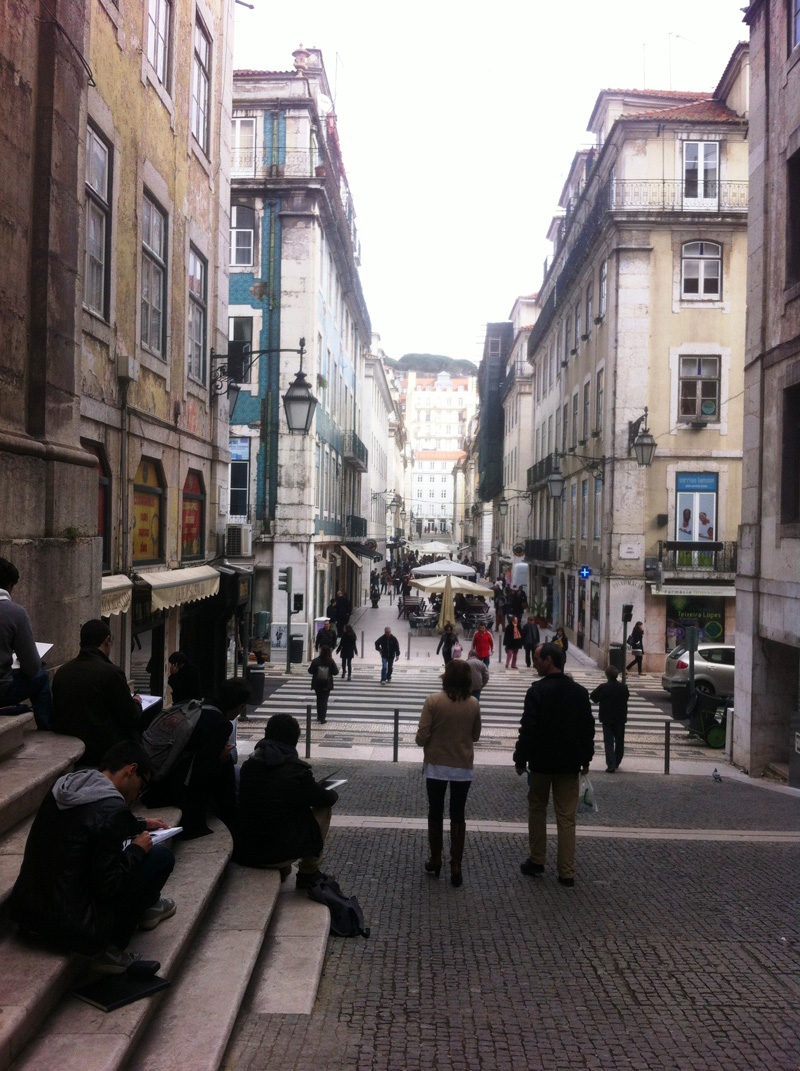
Slika 1: Casa de Paula Rego, Cascais
Slika 2: Baixa, Lisabon
A mala obitelj bio je ured u kojem sam radila – PEDRO RESSANO GARCIA ARQUITECTOS. S dolaskom krize u uredu su ostala samo dva stalna zaposlenika. U vrijeme kad i ja, radila su još dva vježbenika i jedna strana vježbenica. Rad ureda uključuje arhitekturu i urbanizam za razne klijente, ali i nacionalne i internacionalne natječaje, a od značajnijih projekata ističe se „Companhia das culturas“, turistički kompleks na jugu Portugala te „Platforma Tejo“, projekt povezivanja dvije strane rijeke u Lisabonu, što je danas neriješen problem... U uredu se velika pažnja pridodaje maketama, pa sam ja imala priliku raditi maketu od betona za projekt „umjetničke kapele“ unutar obnove ljetnikovca na sjeveru Portugala, kao i raditi na idejnom rješenju istog.
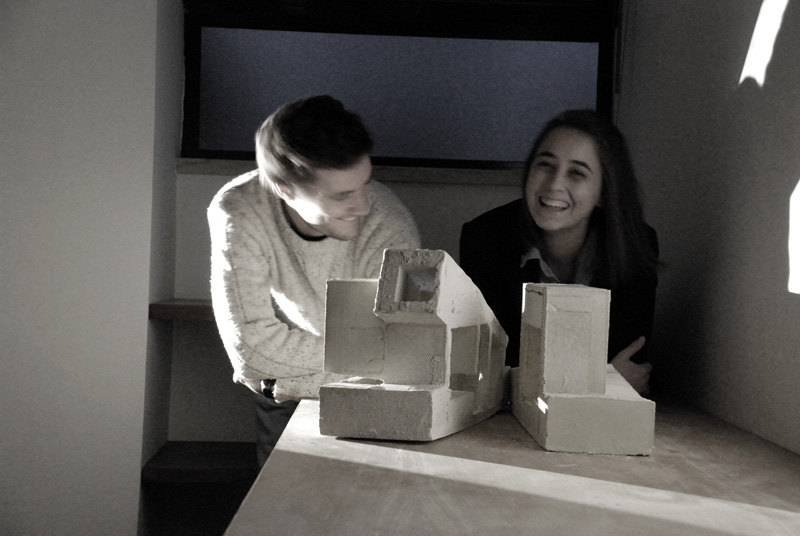
Slika 3: Gotovo, Francisco i Lana

Slika 4: Hosting Lawrence
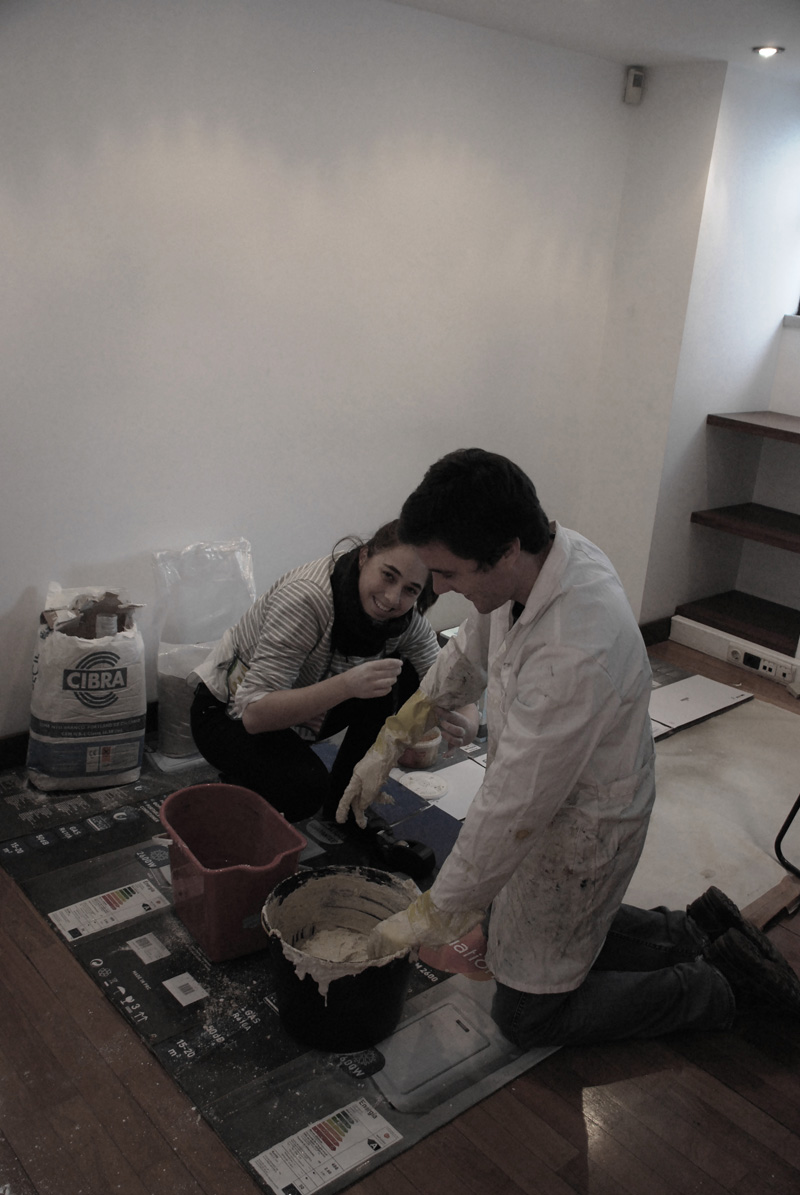
Slika 5: U procesu, Francisco i Lana
Radno vrijeme ureda (kao i većine tamošnjih arhitektonskih ureda) bilo je vrlo ležerno, uostalom kao i sve u Portugalu. Jednostavno tamo „nema priše“. Vrijeme od 10.30 – 13.30 /ručak / 15-19 h – imalo je i pozitivne strane. U biti - nije se bilo teško naviknuti na takav ritam, a pauze za ručak smo često iskorištavali za upoznavanje grada. Tako sam jedno od meni najljepših mjesta u Lisabonu, posjetila upravo za vrijeme ručka. Pokraj Jardim das Amoreiras, u blizini stanice Rato, u blizini Rua Sao Bento (ulice stanovanja), u blizini Terra Santa Issabel (ulice ureda), nalazi se Reservat&´rio da Mãe d'Água das Amoreiras. Završna točka golemog akvadukta iz 18. stoljeća koji se kilometrima proteže kroz grad, skrivena je unutar samog centra grada i pravi je vodeni hram. Samo ime znači Majka Vode. Završen 1834. godine, rezervoar je bio glavno vodeno postrojenje u Lisabonu. Danas otvoren za javnost, u funkciji je Muzeja, čiji glavni i stalni postav čini voda unutar jednostavne mramorne arhitekture. Voda kao glavni eksponat , bazen dubok 7,5m sa ukupno 5500 kubika vode, pobuđuje u istom trenutku i divljenje i smirenost određeno strahopo&ˇtovanje. Takav jedinstveni prostor je danas mjesto održavanja izložbi, koncerata, kazališnih predstava. Na krovu muzeja je još jedan lijepi doživljaj sa vizurom cijelog grada...
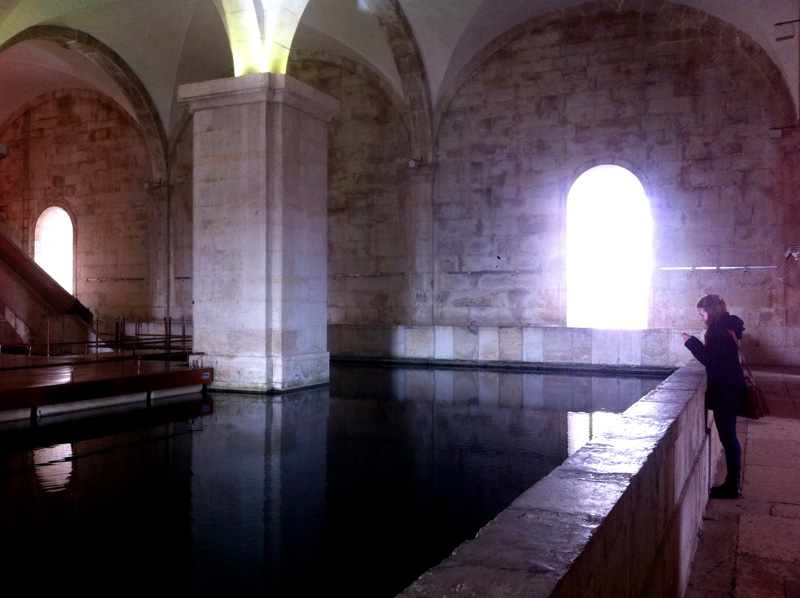
Slika 6: Reservatório da Mãe d'Água das Amoreiras
Nakon takve pauze za ručak, nije se bilo teško vratiti u ured i nastaviti raditi arhitekturu…
Arhitektura u zemlji s velikim brojem arhitekata i poznatih imena struke, odiše čistim i jednostavnim oblikovanjem. Dosljednost mediteranskoj arhitekturi (Aires Matues, Muzej svjetionika, Cascais), jednostavne geometrijske forme i volumeni (Casa de Paula Rego, Souto de Moura, Cascais), spoj prošlosti i sadašnjosti (Oživljavanje arheološkog nalazišta na tvrđavi São Jorge, João Luís Carrilho da Graça, Lisabon) te prilagođavanje kontekstu i krajoliku (Kompleks bazena u mjestu Leca, Alvaro Siza), doprinijela je još ljepšem doživljaju zemlje i grada u kojoj sam odrađivala stručnu praksu.
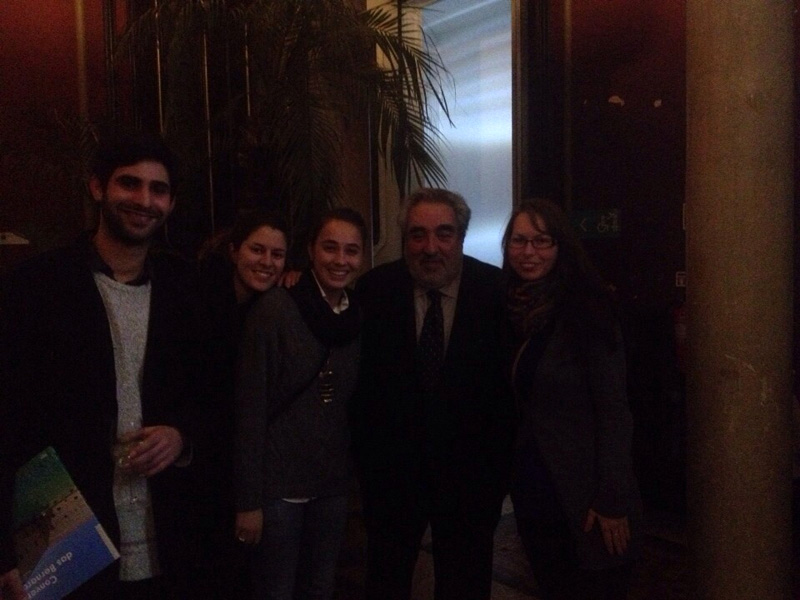
Slika 7: Mladi arhitekti i Eduardo Souto de Moura
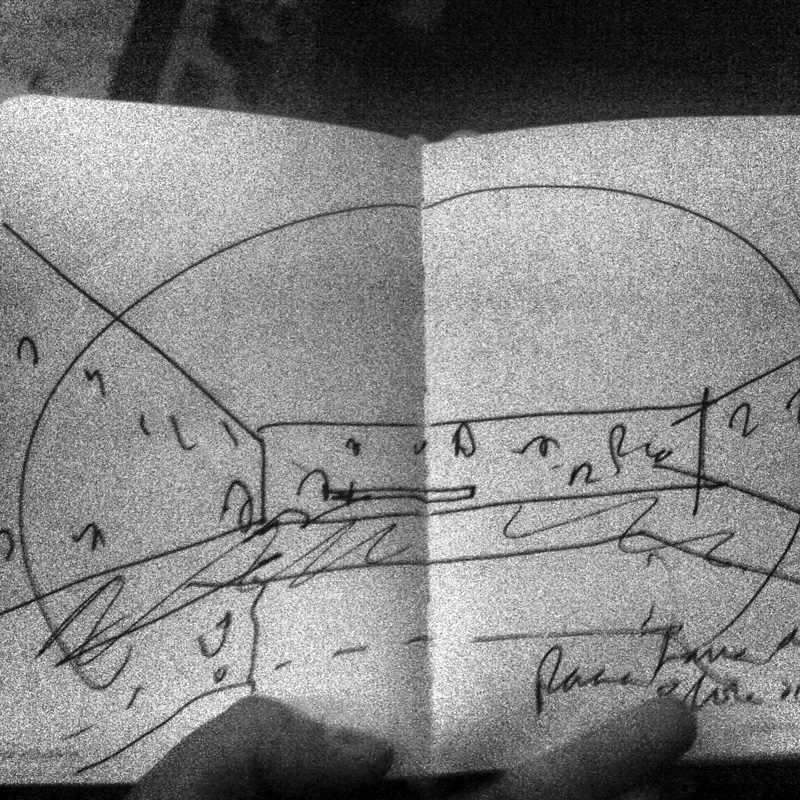
Slika 8: Souto de Moura_skica
Zbog sličnog senzibiliteta te ritma života s kojim bi se mogla poistovjetiti, odlučila sam intervjuirati kolegu Joãoa Paula de Figueireda.
Razgovor prenosim u izvornom obliku: (razgovarali 14.veljače 2014., u uredu PRG Arquitectos)
PORTUGUESE ARCHITECTURE
1.What is the position of Portuguese architecture today?
Portuguese architecture has a good position, we have not only well-known architects building outside boarders, but also many young architects working worldwide.
2.Do you think that Portuguese architecture has an influence on the world architecture especially in the areas of former colonies?
Yes, portuguese architecture has that influence, specially with heritage buildings and constructions that are spread in the four continents, preserving cultural and identity memories like: church´s, fort´s, cities, etc.
Nowadays and in a close past, we still work and develop projects in former colonies like Angola, Moçambique and Brasil, etc. Due to lack of legislation, the Portuguese legislation is still applied in former colonies like Angola that is developing in fast mode.
Brasil, despite having been influenced, has the contraries of other former colonies a very strong own identity in architecture.
3.In what ways did the global crisis affect architectural work in Portugal? To what degree did it change the perception and the way of thinking?
The demand for new buildings and constrution stopped, specially due to banks debelity.In general people are now more interested in renovation and reconstrution, a good oportunity to keep updating the poor and old areas such as neighborhoods, renovaiting and consolidating the urban fabric instead of enlarging cities boarders with new urban blocks.
4.In which way is architectural profession systematized – which organisation is on top of hierarchy?
The profession is ruled by O.A. (Ordem dos Arquitectos). This is the institution that have and should give protection to architects. Same happens whith Layers, Doctors, Engeneers, etc. Basically the group of professionals that a country should have to develop.
Nevertheless the municipalities still have the last word in terms of building permits.
5.Can you select the best 3 architectural realization in Portugal?
A. Baixa Pombalina (downtown Lisbon, 18th century)
- Racional and Hygienism urban plan.
- “ Gaiola” smart wood sismic structure “Cage”.
- Standard but yet different (windows, doors,elevations, heigths)
- Intelegent connections and links between New and Old urban fabric.
B. Aqueduto das Águas Livres ( Lisbon Aqueduct, 18th century)
- 18th century structure for water supply.
- Biggest ogival stone arc in the world (65 meters tall)
- Beautiful water spaces inside.
C. Calouste Gulbenkian Foundation (1956)
- One of the biggest and more competitive competition in Portugal.
- Quality of spaces for expositions and concerts.
- Relation with the surrounding areas with gardens, lakes and different fauna.
BE AN ARCHITECT IN PORTUGAL
1.Do you think that the big number of Architectural schools in Portugal has positive or negative effect on Potuguese architecture – Do you think that quantity of architects also means quality of architecture?
In my opinion, a big number of schools gives the opportunity for the diversity
Indeed it has a negative impact, a feeling of battle between offices and schools, from North to South.In my point of view, most of youg architects in Portugal are “designers” or “executors”, because they will not get the chance to develop fully themselves as architecs and see their creation built.
2.What do you think about position of young architects? Do you think its enought to have only nine months of experience before you get the licence?
In one hand its an excelent opportunitie for good young architects to start working by their own after internship.
In another hand, in general, nine months its not enought. Life after school changes a lot, meaning that responsability, experience, knowledge, wisdom and security on the work cames with time.
3.What is today´s role of architects and architecture in Portugal (or in general)?
The role of architects is decreasing and in state of degradation. No longer the architects has a central position coordinating the different disciplines. The creation of Landscape “architects” and “ Urbanists or planners” came to desorganize and destabilze cities, villages, regions and the territory.
Landscape “architects” in Portugal, the old Agriculture Agronomy Engineers (fauna & flora) are now designing: pathways, sidewalks, squares and parks in cities, without the knowledge of good design according to the cities needs, in another hand “urbanists” are developing bird-eye plans, just looking for profits and income, without a strategy and the good understanding of the hierarchy; House, Street, Block, Citie, Village, Countryside and Nature.
Since the beginning of times that the ARKHITEKTÔN (from greek, meaning the chief of workers) has that role, designing the most beautiful cities and gardens, equating wills and working on the Creation for the people.
Is it possible to live from architecture today?
Very, very hard indeed, almost impossible in Portugal.
In general people are more interested in buying brand new expensive cars, clothes and tecnology rather than in better qualified spaces and natural confort, leading to the use of equipments highly polluters.
ARCHITECTURAL COMPETITIONS
1.In which case are the architectural competitions necessary in Portugal? What organization conducts the competititons?
Public competitions are managed by the government and townhalls of each region.
Competitions are necessary to open the spectrum and give equal opportunities to all architects.
2.Is it possible to influence on results of competition? Does that happening in Portugal? Do you think competitions in general are good?
Everything is possible, and it does happen in Portugal.
Yes, competitions in general are good, nationally and internationally speaking, the problem is that most of competitions are competitions Ideas, so you will not achieve the ultimate goal, to build. Recently, me and my team, won an international competition for Architecture For Humanity, wich was presented in the Biennale di Venezia. It’s allways a good experience and good for your curriculum, but thats all, for now!
http://www.joaomagala.com/oco.html
3.What is the percentage for realization of competition winning work?
It depends on investment and also country and political common wills, but generally they are built.
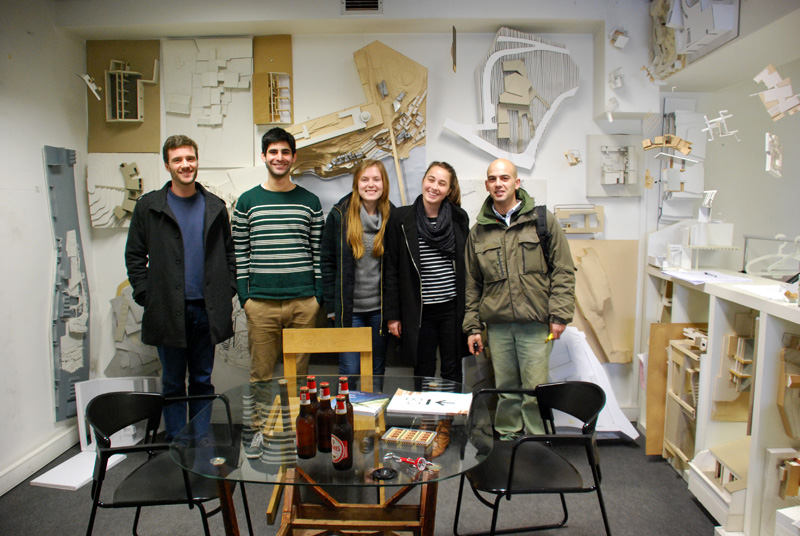
Francisco, Antonio, Helena, Lana, João
Inženjerska znanja koja kroz posao svakodnevno stječemo kako bi prostor koji gradimo bio što kvalitetniji, nužno je potkrijepiti znanjem i iskustvom o kulturi pojedinca te društva koje će u taj prostor ući. U takvoj simbiozi vidim puni smisao arhitekture.
Lana Trobentar
Potprogram Leonardo da Vinci u sklopu EU Programa za cijeloživotno obrazovanje (Life Long Learning Programme – LLL) obuhvaćao je strukovno obrazovanje i osposobljavanje te je bio osmišljen tako da svojim aktivnostima potiče razvoj znanja, vještina i kvalifikacija svih sudionika.
Sudjelovanjem u nekoj od aktivnosti potprograma Leonardo da Vinci, korisnici su imali mogućnost stjecati nova životna iskustva te primjenom stečenih znanja, značajno doprinijeti radu matične ustanove, mogućnostima vlastitog zapošljavanja na tržištu rada te samom gospodarstvu. Potprogram Leonardo da Vinci omogućavao je prijenos dobrih praksi i inovacija u gospodarstvu između država sudionica, usklađivanje obrazovnog sustava sa tehnološkim napretkom i tržištem rada te osobni i profesionalni razvoj sudionika. Više o dobitnicima stipendija saznajte OVDJE, a više o potprogramu Leonardo da Vinci ovdje.



 Društvo
Društvo Društvo
Društvo